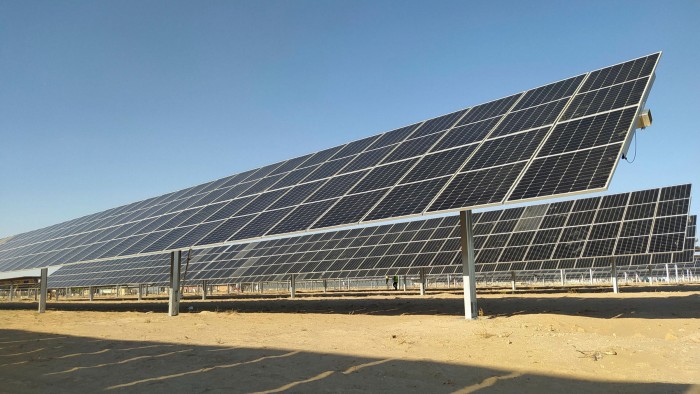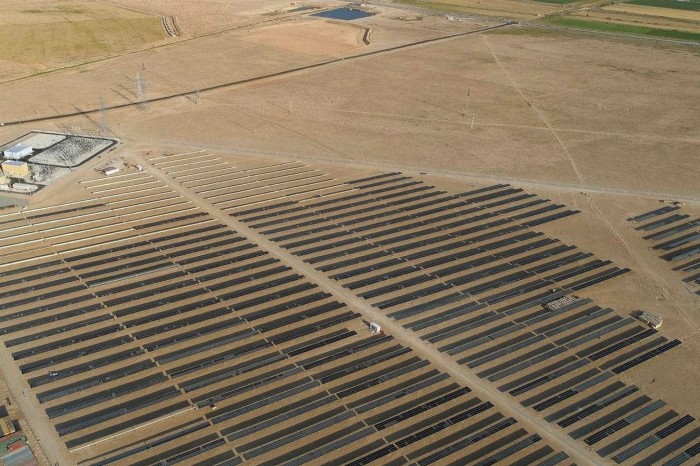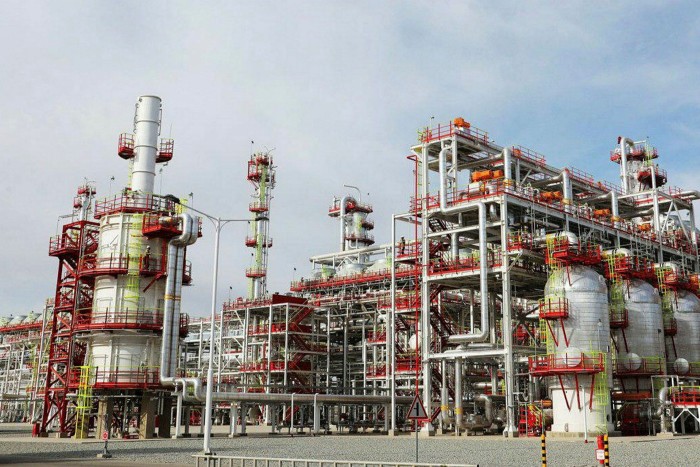Uzbekistan pins hopes on renewable energy

Simply sign up to the Renewable energy myFT Digest -- delivered directly to your inbox.
As Uzbekistan strives for carbon neutrality by 2050, and regional dominance in renewable energy, the first of its multiple green projects has just come to fruition: the country’s first solar power plant — the $100m, 100MW Nur Navoi solar farm — opened in late August.
Historically, the state relied on burning its own gas for energy production, but solar and windpower is now cheaper. So, with 320 days of sun a year, Uzbekistan plans to produce more than 25 per cent of its electricity from renewable sources by 2030.
Officials also see this shift as offering a potential economic boost. “We see our chance in green economy,” Uzbekistan’s deputy prime minister Jamshid Kuchkarov says. “To get into the ranks of upper-middle income countries, we need some leapfrogging. And we see a chance to leap in green economy, digital economy.”
“We see great potential, and we will promote solar power. It’s not only fashionable, it makes economic sense for us,” he explains.

Analysts say the strategy could help the country to overcome power blackouts, which have long disrupted the economy and everyday life.
Nur Navoi, built in partnership with UAE’s Masdar, a subsidiary of the Mubadala sovereign wealth fund, is the first of 19 Uzbekistan renewable energy projects planned for the next five years which are worth $6.5bn, according to President Shavkat Mirziyoyev.
With a fast-rising population of 34m and a growing economy, the government expects demand for power to rise by nearly 50 per cent in the next five years, to 100bn kilowatt-hours per year.
More stories from this report
Uzbekistan’s reform agenda shows signs of slowing
Uzbekistan hires foreign advisers to push through reform programme
Uzbekistan seeks to shed state assets
Uzbekistan’s population boom poses problems for state
Uzbekistan fails to address human rights violations
Taliban takeover turns Uzbekistan into powerbroker
Uzbekistan’s tentative steps towards a digital future
“We have very big plans for new reforms and projects in the electric power industry,” Mirziyoyev said in a statement. “The green economy and renewable energy sources will be the basis of sustainable economic development in the 21st century and, by 2030, our renewable share of electricity generation will exceed 30 per cent,” he added.
Nur Navoi was Uzbekistan’s first public-private partnership solar plant. It was designed, financed and built by Masdar, and also attracted up to $60bn as a loan from the European Bank for Reconstruction and Development, complemented by similar amounts from IFC and Asian Development Bank, according to EBRD.
Masdar is planning to finance and build three other solar projects in Uzbekistan, which the UAE company regards as a strategic investment. In addition, it is working on Central Asia’s largest wind farm, which it hopes will generate 1.5GW a year in 2024.
Uzbekistan is betting on hydropower, too, with 62 projects announced, including both new construction and renovation. By 2030, these plants are expected to generate 13 per cent of the total energy mix, according to the 2020 energy ministry strategy.
Overall, this strategy envisages Uzbekistan producing 45 per cent of its electricity from power plants using natural gas, 17 per cent from solar plants, 8 per cent from nuclear plants 6 per cent from coal.

Kuchkarov says the green agenda also includes plans to turn Uzbekistan into a consumer and producer of electric vehicles. There are only 360 such vehicles in the country so far, he says. To interest more of the population in EVs, the state is considering subsidies.
Analysts believe Uzbekistan’s dive into renewables is justified, given domestic power shortages. Blackouts are common.
“One key factor driving the development of renewable energy sources for Uzbekistan is the tremendous shortage of energy in the country, particularly in its disparate regions,” says Ben Godwin, associate director at Prism Political Risk Management.
“Given the speed at which renewables can bring capacity, they are a very attractive option for Uzbekistan,” he explains, adding that the country is already a regional leader in the development of renewable energy, with only Kazakhstan showing a comparable level of investment.
Uzbekistan is a producer of uranium and rare earth metals, as well, making it a significant contributor to the global low carbon supply chain, Godwin says. Using its uranium for nuclear energy production is another logical step for Uzbekistan, which is planning its first nuclear power plant with Russia’s Rosatom. The two agreed on the project in 2018, but construction has yet to begin.
Scott Osheroff, chief investment officer at Asia Frontier Capital Uzbekistan fund, reckons it would make sense for Uzbekistan to skip solar and wind projects, and focus on nuclear plants instead, which produce a continuous power output.
“Uzbekistan is a top-10 producer of uranium and would benefit from transitioning it’s hydrocarbon intensive to nuclear, even considering leapfrogging solar and wind, which are not baseload and typically backed up by natural gas power plants,” he argues.
“With its existing transmission network, there is no reason Uzbekistan cannot become self-sufficient in electricity production and emerge into a regional exporter,” he adds.

Comments